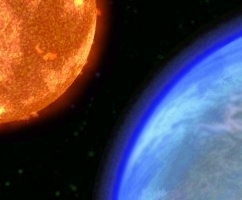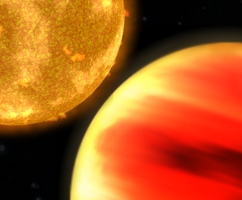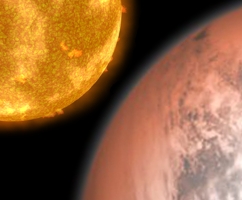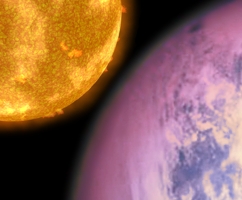The science behind EChO
Information for the general public
What will EChO do?
EChO will be able to look at the atmospheres of planets that transit their host star. See video below for a quick introduction:
Credit: Marcell Tessenyi
How does EChO find molecule signatures?
EChO will find the molecular signatures by the use of spectroscopy.
Planetary system types that EChO will observe
There are currently over 500 exoplanets reported on the Exoplanet.eu website. EChO will study a wide variety of planets orbiting main sequence stars (namely, F, G, K and M). These are the different planet types that EChO will focus on:
- Hot Jupiters
- Hot and Warm Neptunes
- Hot, Warm and Habitable Zone Super Earths
Hot Super Earth, M star |
Warm Super Earth, M star |
Habitable Zone Super Earth, M star |
Hot Jupiter, K star |
Hot Neptune, G star |
Warm Neptune, K star |
